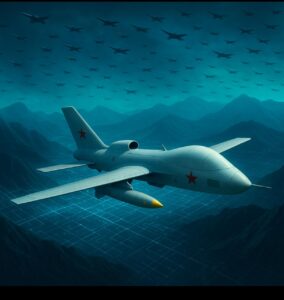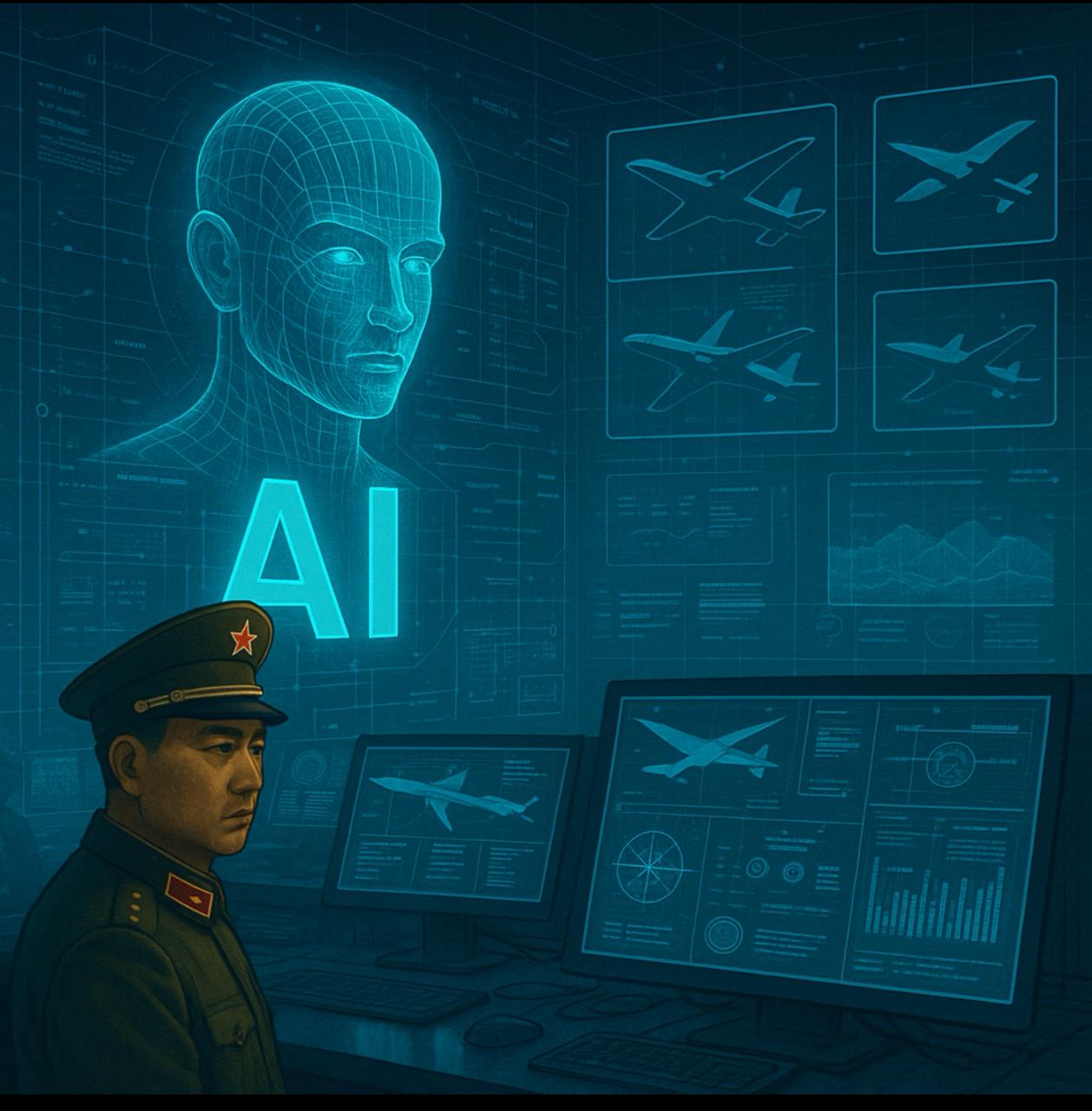A new era of military power is beginning in China, one in which algorithms rather than soldiers or tanks are in charge. Fueled by massive state funding and dual-use tech ecosystems, China is integrating Artificial Intelligence (AI) into every layer of its military machine, from surveillance and command to autonomous combat and psychological operations.
India is at the forefront of this strategic shift, despite the fact that international attention frequently portrays this as a threat to U.S. supremacy. India faces a multifront threat across its borders, in cyberspace, on the sea, and in the minds of its citizens as China advances its AI-driven warfare doctrines.
1. PLA’s AI Warfare Strategy: Civil-Military Fusion at Full Throttle

The People’s Liberation Army (PLA) believes that AI is necessary for “intelligentized warfare,” in which software-based speed and autonomy take the place of human limitations when making decisions and carrying out combat.
Key Strategic Areas:
Support for Intelligent Decisions
AI systems provide real-time threat analysis and battlefield simulation for quick, data-driven decisions.
Independent Platforms
AI-piloted aircraft, swarming drones, and robotic ground units are becoming essential battlefield assets.
C4ISR driven by AI
For seamless operational visibility, C4ISR (command, control, communications, computers, intelligence, surveillance, and reconnaissance) functions are now integrated with AI.
Cognitive Warfare
China uses AI-generated disinformation to boost psychological operations, aiming at perception and morale long before the first shot is fired. China’s strategy is not about replacing soldiers, it’s about owning the battlespace before combat even begins.
2. What This Means for India: Five Strategic Risks
i. Control & surveillance of the border
China versus AI India’s Hand-to-Hand Defense
- ISR across the Line of Actual Control (LAC) is made possible 24/7 by AI UAVs and facial recognition.
- China is able to anticipate incursions and track troop movements.
- India’s surveillance systems are disconnected and heavily reliant on human patrols.
ii. Gap in tactical speed
- versus Algorithmic Command Lag in the bureaucracy
- The PLA uses AI to quickly process battlefield data and make decisions.
- India’s response time is slowed by the doctrine-driven and approval-heavy chain of command.
- China may gain ground before India mobilizes in a swift cross-border incursion.
iii. Cyber & Cognitive Warfare
Weaponized Digital
- Influence China’s cyber units, enhanced by AI, can launch phishing attacks, deep fakes, and narrative floods.
- During the 2020 Galwan standoff, fake news bots were used to manipulate public perception in India.
- In a future crisis, AI-generated psychological warfare may paralyze India’s policymaking and civil stability.
iv. Drones that swarm on their own India’s
Air Defense Is Under Attack
- Drone swarms with AI-powered data sharing and autonomous targeting have been tested in China.
- Due to their sheer volume and speed, these drones can overwhelm traditional radar systems.
- Swarms of small, intelligent drones are not well-suited for India’s air defenses, which were designed for larger threats.
v. Maritime Threats in the Indian Ocean
At Sea, AI For its PLAN fleets,
- China uses AI-driven underwater drones and predictive navigation.
- Silent UUVs and robotic submarines could compromise India’s control over key chokepoints.
- Undersea detection in India is still mostly done by hand and using ships.
The broader shift in strategy:
- numbers over intelligence Air, land, and sea superiority is being redefined by China.
- It is now using AI to gain speed, precision, and surprise rather than just troop numbers or firepower.
- This directly challenges India’s conventional strategies, which are based on: arousal of the masses Buffers for doctrine Gradual escalation.
5. What India Could Do to Catch Up
a. Create a Dedicated AI Warfare Command
Unify R&D, battlefield testing, and inter-service doctrine development for AI-driven defense.
b. Indigenize AI Capabilities via Startups
Support dual-use tech companies, fast-track testing of autonomous systems, and incentivize public-private defense tech partnerships.
c. Strengthen Cyber & Cognitive Warfare Infrastructure
Establish an AI-powered cyber offensive wing. Monitor digital sentiment for counter-disinformation and psychological warfare.
d. Deploy AI at the Borders
Use drones, satellites, and AI surveillance along the LAC for predictive threat analysis.
e. Forge AI Defense Alliances
Engage in AI co-development with allies like the U.S., France, and Israel. Use QUAD and other coalitions to strengthen AI-driven maritime security.
FAQs
How does China use AI in combat?
China uses AI in surveillance, autonomous combat, cyber operations, and decision-making to control the battlefield quickly and coordinately.
Why is India in a bad position?
India’s defense still relies on manual surveillance, underfunded AI programs, and traditional command structures, resulting in a significant lag in speed and adaptability.
What can India do to catch up right now?
AI must be integrated into border management, cyber units, and tri-service planning, and a centralized AI warfare command must be established, as well as funding for indigenous defense startups.
Could China’s AI lead to conflict in the Indian Ocean?
Yes. By silently mapping or disable undersea infrastructure, AI submarines and autonomous naval drones could pose a threat to India’s presence in the Indian Ocean Region (IOR).
Conclusion
The incorporation of AI into China’s military strategy is not a concept of the future; rather, it is an operational reality in the present day. Beijing is preparing to dominate not only with weapons but also with predictive intelligence and digital control, from the Himalayas to the high seas.
The stakes are unmatched for India. If you don’t change, you’ll fall behind not only in defense but also in sovereignty. India needs to be prepared before it runs out of time because the next conflict might not start with gunfire but rather with a line of code.










